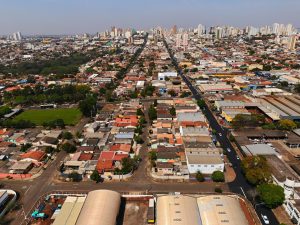The Future of Mixed-Use Developments in Urban Planning
Mixed-use developments have been widely embraced in urban planning as a solution to creating dynamic and livable neighborhoods. These developments, which combine residential, commercial, and oftentimes recreational spaces, have become a popular trend in recent years and are expected to play a major role in shaping the future of our cities. With urban populations on the rise, there is a growing need for efficient and sustainable use of space, and mixed-use developments seem to offer the perfect solution. In this article, we will delve into the future of mixed-use developments in urban planning and explore how they are redefining the way we live, work, and play in cities.
The Rise of Mixed-Use Developments
Mixed-use developments are not a new concept. In fact, they have been around since the early 20th century, mostly in the form of street-level shops with residential units above. However, it wasn’t until the rise of modern urban planning in the mid-20th century that mixed-use developments started to gain traction. With the advent of cars and suburbanization, cities were facing a decline in population and a shift towards separated land uses, leading to the creation of isolated suburbs with no sense of community. It was during this time that the concept of mixing different land uses within a single development was revived as a tool for creating more vibrant and sustainable cities.
Benefits of Mixed-Use Developments
The appeal of mixed-use developments lies in their ability to offer a diverse range of amenities and services within a compact and convenient area. By combining residential and commercial spaces, these developments reduce the need for long commutes, thus promoting a more sustainable lifestyle. Additionally, they create a sense of community by bringing together people from different backgrounds. This blend of people and activities results in a lively and bustling neighborhood that is desirable for both residents and businesses.
From an economic perspective, mixed-use developments also offer numerous benefits. By integrating different types of land uses, developers can maximize land use efficiency and maximize revenue. This, in turn, can lead to higher property values and increased tax revenues for the city. Moreover, mixed-use developments often have a positive impact on local businesses, as the high density and diversity of activities attract more customers and contribute to the local economy.
Future Trends in Mixed-Use Developments
More Emphasis on Walkability and Accessibility
Walkability and accessibility have become key priorities for urban planners and developers in recent years. With the rise of the “car-less” city movement and a growing focus on sustainability, there is a growing demand for neighborhoods that are walkable, bike-friendly, and well connected to public transportation. To meet these demands, the future of mixed-use developments is expected to place more emphasis on creating pedestrian-friendly spaces and integrating different modes of transportation, such as bike lanes and public transit.
Incorporation of Green Spaces
As cities become more densely populated, there is a growing need for green spaces to provide a respite from the urban environment. Mixed-use developments are well positioned to meet this need by incorporating parks, plazas, and rooftop gardens into their design. These green spaces not only provide recreational opportunities but also help improve air quality, reduce noise pollution, and promote a sense of well-being among residents.
Integration of Technology
Technology is rapidly transforming the way we live and work, and mixed-use developments are no exception. From smart home systems to integrated transportation services, technology is being integrated into every aspect of these developments. In the future, we can expect to see more advanced features, such as automated energy management systems, connected streetlights, and smart parking solutions, making mixed-use developments more efficient, sustainable, and convenient for residents.
In Conclusion
Mixed-use developments are here to stay and are poised to change the way we think about and design our cities. By offering a combination of residential, commercial, and recreational spaces, these developments not only provide a more sustainable use of land but also create vibrant and diverse communities. With a growing focus on walkability, green spaces, and technology, mixed-use developments are expected to play a significant role in shaping the future of urban planning and creating livable, desirable cities for years to come.








